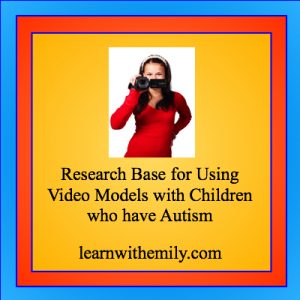This post may contain affiliate links. Affiliate links use cookies to track clicks and qualifying purchases for earnings. Please read my Disclosure Policy, Terms of Service, and Privacy policy for specific details.
Video modeling is an instructional technique where a video is used to demonstrate a particular skill or activity. Video modeling has been effectively used with individuals who have autism. The following list is a brief summary of skills researchers have taught individuals with autism using video models.
Video Models can be effectively used to:
- increase conversational speech (Charlop & Milstein, 1989; Sherer et al., 2001)
- generalize shopping skills (Haring, Kennedy, Adams, & Pitts-Conway, 1987)
- teach communication and social skills (Kimball, Kinney, Taylor, & Stromer, 2004)
- teaching social behaviors (e.g. complement giving) particularly when followed by additional practice, prompts, and role playing for high functioning ASD (Apple, Billingsley, & Schwartz, 2005)
- teach play skills (motor and verbal) –without prompting, correction, or reinforcement from adults (D’Ateno, Manigiapanello, & Taylor, 2003) and increase play-related statements towards siblings (Taylor, Levin, & Jasper, 1999)
- teach perspective taking (the ability to determine the mental states of others) (Charlop-Christy & Daneshvar, 2003)
- increasing spontaneous requesting (Wert & Neisworth, 2003)
When I taught children with autism in the public school setting, I used video models to teach my students classroom routines such as, what to do in a fire drill, how to take the attendance to the office, and how to wash your hands. I have also used video models with my own children to teach the steps for toileting and to demonstrate learning and play activities.
Consider creating a video model to teach your child or student a missing skill. With current recording technology, videos models are easy to create and show to children. For further reading on video modeling, consider the following books:
References
Apple, A. L., Billingsley, F., & Schwartz, I. S. (2005). Effects of video modeling alone and with self-management on compliment-giving behaviors of children with high-functioning ASD. Journal of Positive Behavior Interventions, 7, 33-46.
Charlop, M. H., & Milstein, J. P. (1989). Teaching autistic children conversational speech using video modeling. Journal of Applied Behavioral Analysis, 22, 275-285.
Charlop-Christy, M. H., & Daneshvar, S. (2003). Using video modeling to teach perspective taking to children with autism. Journal of Positive Behavior Interventions, 5, 12-21.
D’Ateno, P., Manigiapanello, K., & Taylor, B. A. (2003). Using video modeling to teach complex play sequences to a preschooler with autism. Journal of Positive Behavior Interventions, 5, 5-11.
Haring, T. G., Kennedy, C. H., Adams, M. J., & Pitts-Conway, V. (1987). Teaching generalization of purchasing skills across community settings to autistic youth using videotape modeling. Journal of Applied Behavior Analysis, 20, 89-96.
Kimball, J. W., Kinney, E. M., Taylor, B. A., & Stromer, R. (2004). Video enhanced activity schedules for children with autism: A promising package for teaching social skills. Education and Treatment of Children, 27(3), 280-298.
Taylor, B. A., Levin, L., & Jasper, S. (1999). Increasing play-related statements in children with autism toward their siblings: Effects of video modeling. Journal of Developmental and Physical Disabilities, 11, 253-264.
Wert, B. Y., & Neisworth, J. T. (2003). Effects of video self-modeling on spontaneous requesting in children with autism. Journal of Positive Behavior Interventions, 5, 30-34.




